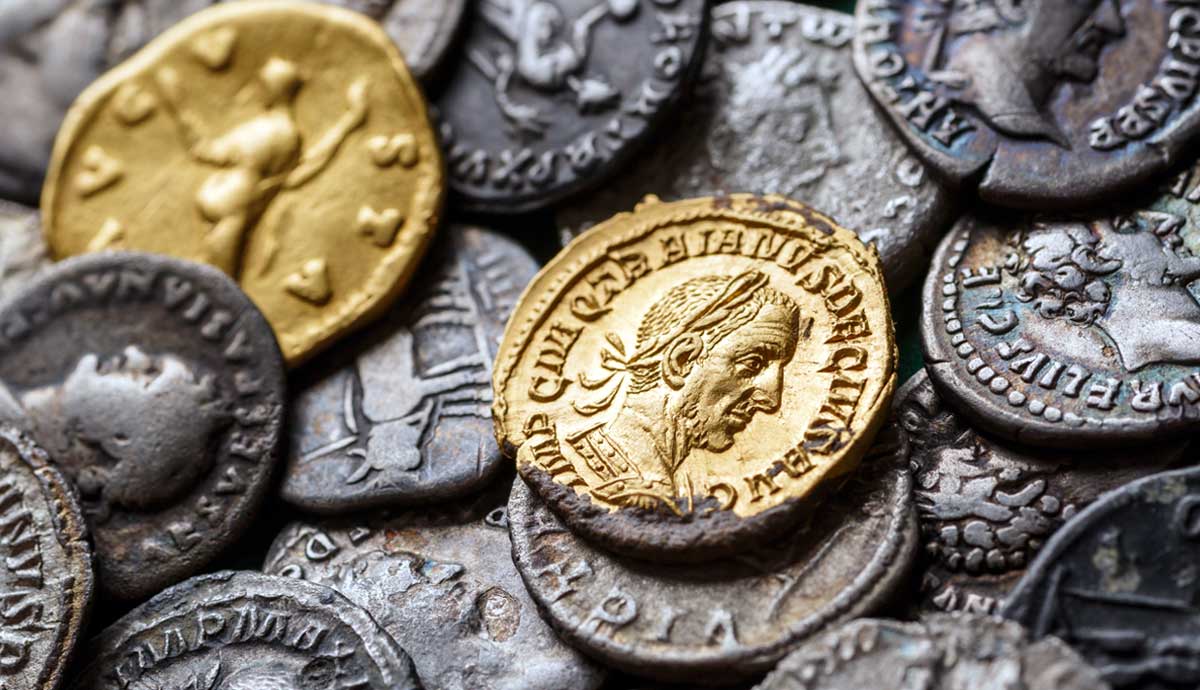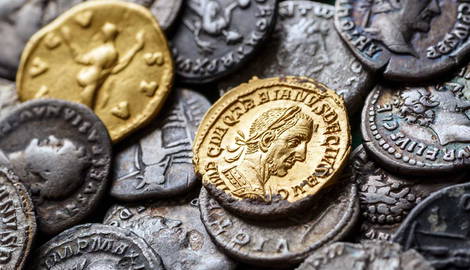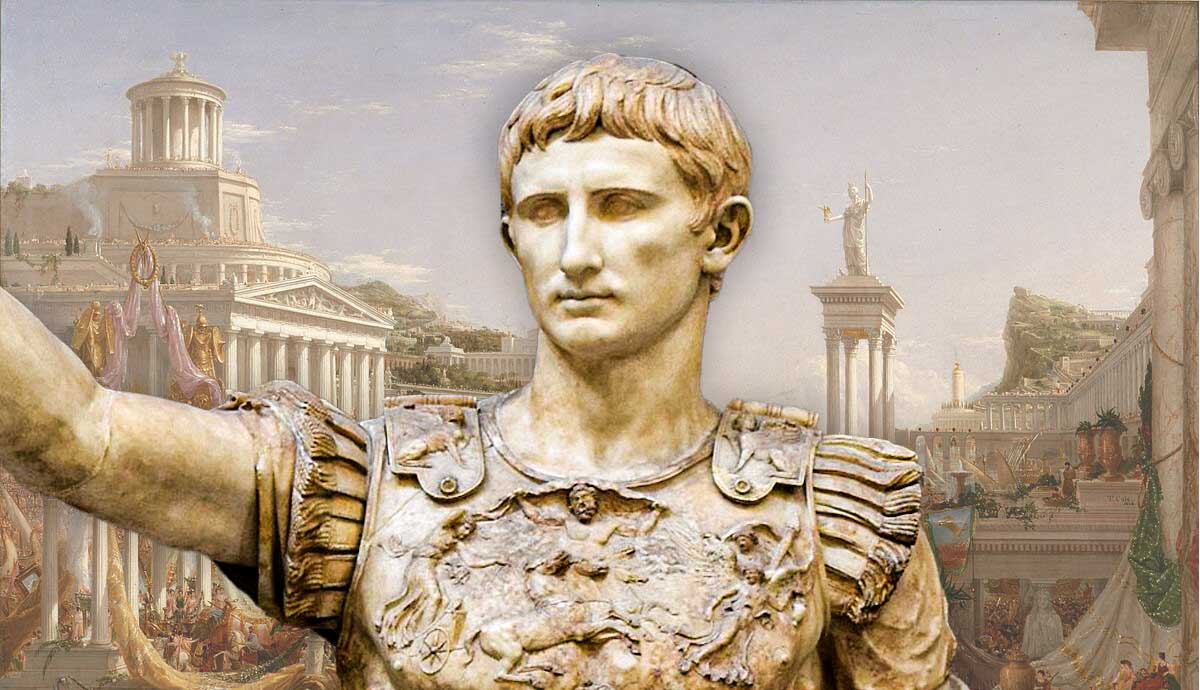
During the Crisis of the Third Century (235–284), Roman coinage suffered from a heavy debasement that completely shattered the Roman monetary system. Some emperors, such as Aurelian (270–275), tried to improve the situation by implementing monetary reforms. However, it was only during the reign of Emperor Diocletian (284–305) that the first thorough monetary reform happened. Although many of his measures were ultimately unsuccessful, they laid the foundation for the reforms of Constantine the Great (306–337).
Constantine’s monetary reform proved to be a success, although some of the coins he issued were later debased. Diocletian and Constantine created a monetary system that continued during the Byzantine Empire.
Diocletian’s Initial Measures (294 CE)

During the Third Century Crisis (235–284), the Roman currency suffered heavy debasement. The dominant denomination during that time was antoninianus. It was nominally a silver coin, but its silver content was heavily reduced, sometimes dropping as low as 2-3%! Other denominations, especially golden aurei, also suffered from debasement. Emperor Aurelian (270–275) attempted to counter this with the coinage reform in 274 CE. Although he managed to stabilize the currency, the effects of this reform are not clear.
With the ascension of Diocletian in 284 CE, the Roman Empire entered into a period of slow recovery. Diocletian implemented a series of administrative, ideological, economic, and military reforms aimed at restoring the empire. After the establishment of the Tetrarchy in 293 CE, Diocletian tried to restore confidence in the Roman imperial coinage.

The new system of coinage that was introduced in 294 CE was based on a trimetallic standard of gold, silver, and bronze/copper. The aureus remained a major gold coin and was struck at the ratio of 60 to 1 Roman pound, the same as before. The antoninianus was discontinued, and a new silver denomination was introduced, which was named argenteus (lit. “of silver” in Latin). Other smaller denominations were introduced, such as the follis (also known as the nummus), a copper coin with a thin silver coating (i.e., a billion coin).

This coinage reform was based on an earlier Augustan system where 1 aureus was worth 25 denarii (a 1:25 ratio of gold and silver coins). This time, the denarius was replaced with the argenteus. The silver content of argenteus was surprisingly high, around 95%. This was not sustainable because its intrinsic value in precious metals was higher than the nominal value of the coin.
Diocletian’s reasoning behind this was not economic; he probably simply wanted to restore faith in the silver coinage, which dominated the Roman economy for centuries prior to the crisis.
Further Reforms and Edict on Maximum Prices (301 CE)

Although the introduction of a new coinage did halt the debasement, prices still continued to rise. Moreover, because of the lack of silver and gold, the nummus became the most used denomination. Diocletian brought back the denarius, not as an actual coin but as a measurement of values between different denominations. In this system, 1 aureus was equal to 1,000 denarii, 1 argenteus was equal to 100 denarii, and 1 nummus was equal to 25 denarii. This was an attempt to allow price increases (which were counted in denarii) without debasing the actual coinage.
In 301 CE, Diocletian issued two edicts as an attempt to combat inflation. The first of these was the Edict on Currency, according to which the value of imperial coinage was retariffed so that it would have double its value. This edict was probably a prelude to a more (in)famous Edict on Maximum Prices.

Between November 20 and December 10 of 301 CE, Diocletian issued his most famous act, the Edict on Maximum Prices (Edictum de Pretiis Rerum Venalium). The edict set maximum prices for most common goods and services throughout the empire, as well as maximum wages. There are no complete versions of the text, but it did survive in many fragments. All prices are listed in denarii. It was unnecessarily brutal with severe punishments for non-compliance.
Most surviving fragments of the edict come from Diocletian’s part of the empire, which might suggest that it had a limited reach. All in all, the edict was a failure. Instead of stopping the inflation, it only resulted in the spread of a black market and illegal commerce. We do not know to what end it was enforced, but it was most certainly abandoned after Diocletian’s retirement in 305, if not earlier.
Reforms of Constantine the Great (306–337)

Although Diocletian’s coinage reforms did not solve all the empire’s monetary issues, they did lay the foundation for the reforms of Constantine the Great. Constantine’s first set of reforms was enacted in 310 CE. He introduced three new types of gold coinage. Out of these, the most important one was the solidus, which was struck at the ratio of 72 to 1 Roman pound. It is important to note that the solidus was first introduced earlier by Diocletian, but it was a very limited issue that did not last very long. After its reintroduction in 310, it slowly became a dominant Roman coin.
The other two gold denominations were semissis and scripulus, which represented fractions of a solidus (1/2 and 3/8, respectively). The aureus continued to be issued in the eastern part of the empire until 324 CE. By 310 CE, production of the argenteus was completely abandoned.

A second set of Constantine’s monetary reforms was enacted after 324 CE. In that year, Constantine defeated Eastern Roman Emperor Licinius (308–324), thus becoming the sole Roman emperor. In that or the following year, Constantine reintroduced silver coinage with two new types. The first of these was the miliarense, which was valued at 1/18 of a solidus and had the same weight as a solidus (c. 4.5 grams). The smaller silver denomination was called a siliqua, which was valued at 1/24 of a solidus with the weight of c. 3.4 grams. The siliqua had a similar purity and weight as Diocletian’s argenteus, at around 96% silver.
One denomination that suffered a heavy debasement during Constantine’s reign was the follis/nummus. When Diocletian introduced the nummus in 294 CE, it was one of the largest coins in circulation, with a weight of 10 grams. By 310 CE, however, its weight dropped to 4.5 grams. To improve the situation, Constantine introduced a new billon coin called centenionallis. It was a lighter coin with the weight of about 3 grams, but it too was debased in the years that followed.
Later Changes and Influence

The only denomination that remained stable after Constantine’s death in 337 CE was the solidus. Other coins were slowly debased. For example, a silver siliqua fell to c. 2.25 grams by 357 CE. The most problematic was the bronze coinage.
Emperors Constantius II and Constans attempted to reform the bronze coinage in 348 CE by introducing new denominations to replace the old ones. It was called maiorina, and it had several variations (heavy, light, and several fraction issues). All variations of maiorina were heavily debased until they were abandoned altogether by Emperor Julian the Apostate (361–363). He brought back the centenionallis and issued a large billon coin of about 8.25 grams that was similar to the original follis. Julian’s denominations lasted, but they were debased much like the previous ones.
It was not until 498 CE that Roman bronze coinage stabilized. In that year Eastern Roman Emperor Anastasius I (491–518) carried out a monetary reform that introduced a wide range of bronze denominations. Each of these coins represented multiples of old nummi with marks of value on the reverse (for example, M for 40 nummi, K for 20 nummi, etc.).

After the dissolution of the Western Roman Empire in the late 5th century, the monetary system created by Diocletian and Constantine continued in the Eastern Roman (i.e., Byzantine) Empire. Although it went through a lot of changes in the following centuries, one coin denomination in particular had a lasting influence, and that was the solidus.
The solidus remained in use throughout the Byzantine Empire up until the 11th century. In the Greek-speaking world, the solidus was also known as the nomisma. For most of its existence, the solidus/nomisma had a very high gold content, around 98%. Debasement only started in the early 11th century, and by the reign of Alexios I Komnenos (1081–1091), it was finally changed to another gold coin called the hyperpyron. Although the Byzantine Empire mostly used Greek as an official language, Latin inscriptions persisted on solidi for a long time, even as late as the 9th century CE.
The influence and legacy of the solidus goes far beyond the borders of the Roman Empire. During the Late Antiquity and Early Middle Ages, it was one of the main coins used for trade and commerce in the Mediterranean region. Because of that, it influenced coins in many other countries. Most notably, early Arab gold coins called dinars were directly influenced by the Byzantine coins. The earliest gold dinars even copied Byzantine obverse and reverse types with Arab inscriptions added and Christian symbols removed.
In Europe, Byzantine solidi were imitated and minted by many peoples during the Early Middle Ages, such as Visigoths, Lombards, and Franks. In the Frankish Kingdom, the solidus was minted up until the Carolingian era (751–987 CE). It came to be known as the sou by the Franks. Even after its minting ceased during the 8th century, the sou continued to be used in France as the accounting unit all the way up until the French Revolution.










